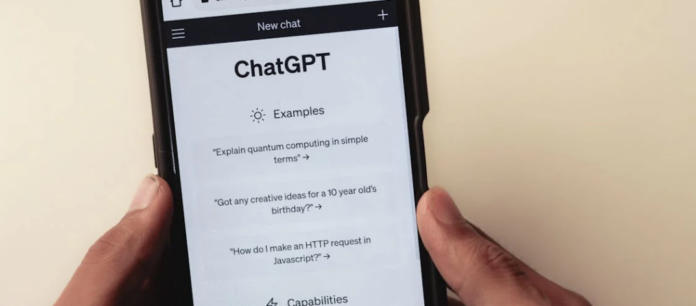Physics can be a subject filled with complex equations and abstract concepts. For many students, tackling physics homework often feels overwhelming, with its blend of mathematical formulas and real-world applications. In this context, OpenAI’s o1 model comes into play, designed to assist in breaking down these complex problems into simpler, more manageable steps. By offering structured guidance, OpenAI o1 helps students navigate through challenging physics topics.
In this post, we’ll look at how OpenAI o1 aids in simplifying physics equations and theories, providing a clearer path to solving problems. We’ll also explore how Gauth, another AI tool, complements o1’s capabilities, offering additional support to make learning physics more accessible and less stressful.
Introduction to GPT-o1: OpenAI’s Advanced AI Model
OpenAI’s GPT-o1 is part of a new series of AI models designed to take on complex tasks by spending more time thinking before responding. It’s more than just a homework helper—it’s capable of reasoning through challenging problems and offering step-by-step guidance for a wide range of subjects, including physics, coding, math, and more.
According to the official description on OpenAI’s website, GPT-o1’s advanced reasoning capabilities enable it to handle more difficult problems, providing clear explanations and personalized assistance. Whether you’re working through a difficult physics equation or trying to understand a complicated scientific concept, GPT-o1 is designed to help students engage more deeply with the material.
Now, let’s dive into how GPT-o1 specifically aids students in breaking down difficult physics homework.
How GPT-o1 Helps Simplify Physics Homework
OpenAI o1 is a general-purpose AI model that can assist users in various fields, including education. In physics, it can break down equations and concepts that may seem daunting at first glance. It can take an equation like Newton’s second law (F = ma) and guide the student step-by-step through the process of solving for force, mass, or acceleration.
By interpreting the formula’s elements and explaining how to manipulate the equation, o1 helps clarify how these concepts are interconnected. This process ensures that the problem-solving journey is structured, offering students a clearer understanding of how to approach similar problems in the future.
Breaking Down Equations and Concepts
When it comes to physics, many students struggle not just with understanding formulas, but also with applying them in the right context. OpenAI o1 can assist by showing how each variable in an equation fits into the overall picture.
For instance, in problems that deal with energy or motion, o1 can help identify the appropriate formula, explain how it applies to the scenario, and walk through the calculations. This systematic breakdown helps in recognizing how the numbers relate to real-world physics phenomena, making abstract ideas easier to understand.
The model is equipped to guide users through both basic and advanced physics problems, offering explanations in a way that aligns with the user’s pace of learning.
Clarifying Concepts Through Visualization
Physics isn’t just about crunching numbers—understanding how these numbers translate into the physical world is key. OpenAI o1 can assist with this by providing explanations that connect the math to visual or conceptual representations.
For example, if a problem involves forces acting on an object, o1 can describe how those forces interact. While o1 doesn’t generate visual images, its explanations can help students mentally visualize scenarios, making abstract concepts like force diagrams, momentum, or acceleration easier to grasp.
Transitioning to Gauth: Enhancing the Physics Learning Experience

While o1 offers a structured breakdown of physics problems, Gauth serves as an additional layer of support, providing enhanced features for learning. Where o1 walks through equations and clarifies concepts, Gauth offers tailored guidance and resources to reinforce the learning experience.
Gauth is capable of identifying key information from textbooks, notes, or other educational materials, making it easier for students to focus on the most relevant parts of a lesson. By highlighting crucial sections and offering precise explanations, Gauth helps streamline the study process, complementing o1’s problem-solving capabilities.
Using Gauth for More Targeted Learning
Gauth’s approach to learning is personalized. It provides students with detailed answers to specific questions, helping them deepen their understanding of physics topics. Additionally, Gauth can offer extra resources, such as practice problems or tutorials, to help students reinforce what they’ve learned from o1’s guidance.
By combining Gauth’s ability to target specific areas of confusion with o1’s step-by-step approach to solving equations, students have access to a comprehensive set of tools for tackling their physics homework.
Conclusion: GPT-o1 and Gauth as Tools for Simplifying Physics
OpenAI’s o1 model helps students approach physics homework with more clarity by breaking down complex equations and offering structured explanations. This model assists with both the mathematical side of physics and the conceptual understanding needed to apply those formulas in real-world situations. It offers a step-by-step approach to problem-solving, which can be particularly helpful when working through challenging topics.
At the same time, Gauth enhances this experience by providing additional targeted support. Gauth’s resources complement the structured guidance offered by o1, making the overall learning process smoother. Together, these tools provide students with the means to better understand physics concepts and successfully complete their homework.









